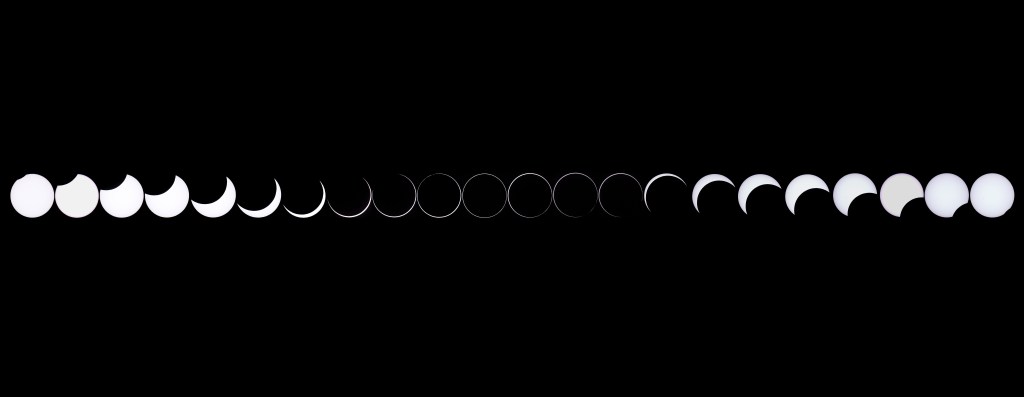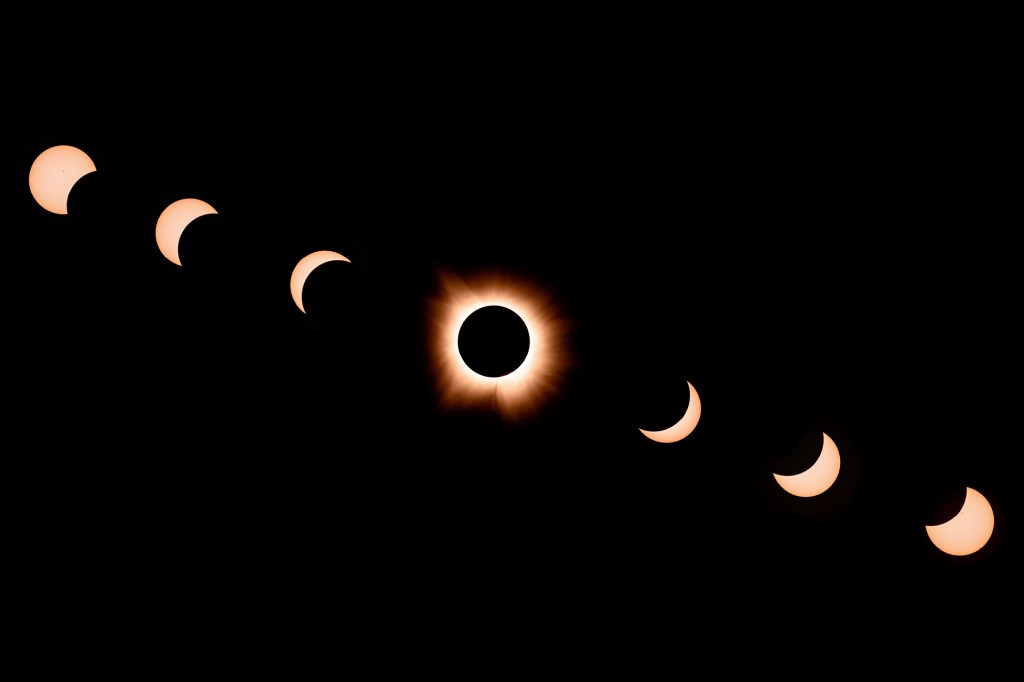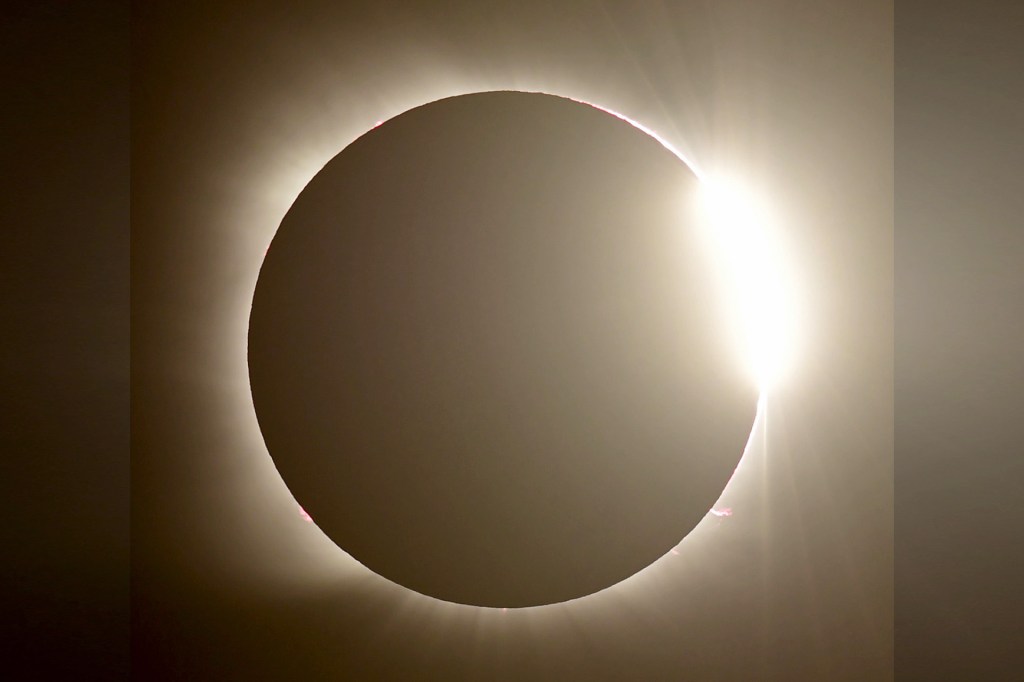
A total solar eclipse will cross the United States on August 21, 2017. In a total solar eclipse, the moon moves directly between the Earth and the sun. The moon completely blocks the sun and casts a shadow on Earth. During the brief minutes of the total eclipse, the sky darkens and the air cools.
This eclipse will be the first total solar eclipse to cross from coast to coast since 1979. It will begin in Lincoln Beach, Oregon, at 9:05 a.m. PT, as a partial solar eclipse. It will turn into a total solar eclipse at 10:16 a.m. The eclipse will then make its way eastward across the country. It will end at 2:44 p.m. ET near Columbia, South Carolina.
For those who want to see the total eclipse in person, it will be visible in parts of 14 states. Those states are Idaho, Wyoming, Nebraska, Missouri, Kentucky, Tennessee, Georgia, North Carolina, and South Carolina. The eclipse will last up to two minutes and 40 seconds. Skygazers in other states will be able to see a partial eclipse. For those who want to experience the total eclipse, there are plenty of ways to watch it live online.
TIME’s Special Coverage
TIME will stream the eclipse starting at 12 p.m. ET on August 21 on Time.com. Spaceflight historian and YouTuber Amy Shira Teitel and TFK Kid Reporter Caroline Curran will co-host the show from New York City. TIME's Jeff Kluger will co-host it from Casper, Wyoming. Astronaut Marsha Ivins will join the livestream on air.
TIME also has a special guest for kid viewers. NASA solar system ambassador Charles Fulco will explain a solar eclipse to students and provide a lesson on space vocabulary. He will teach students how to make a safe solar eclipse viewer and answer some common eclipse questions. Teachers, make sure to follow along in your classroom!
Additionally, TIME and LIFE VR will be producing a 360° VR livestream of the solar eclipse. The stream will show an on-the-ground view from Casper, Wyoming.
NASA will host an "Eclipse Megacast" on its website. The four-hour program will cover the eclipse as it moves across the states. According to NASA, the coverage will allow viewers to interact with scientists and people who are viewing the eclipse in person. NASA TV will also broadcast the program, as will some local television stations.

This image is composed of pictures from a solar eclipse in Argentina on February 26, 2017.
ALEJANDRO PAGNI—AFP/GETTY IMAGESAn Important Warning
Watching the solar eclipse directly without proper eye protection in person is not an option. It can cause temporary or permanent damage to your vision. It can also be dangerous to wear eclipse glasses that have not met safety standards. Official glasses block 99.99% of the sun's rays. It may be too late to order glasses online, but you can still try to find them at stores. The American Astronomical Society has a list of stores that are selling safe glasses. The website lists 7-Eleven, Best Buy, Toys "R" Us, Walmart, and others. Not all of the retail locations will have them in stock. Experts recommend calling the store before visiting.
Whether in person or online, this special solar eclipse should not be missed! Read this story to learn why this space event is so rare.











